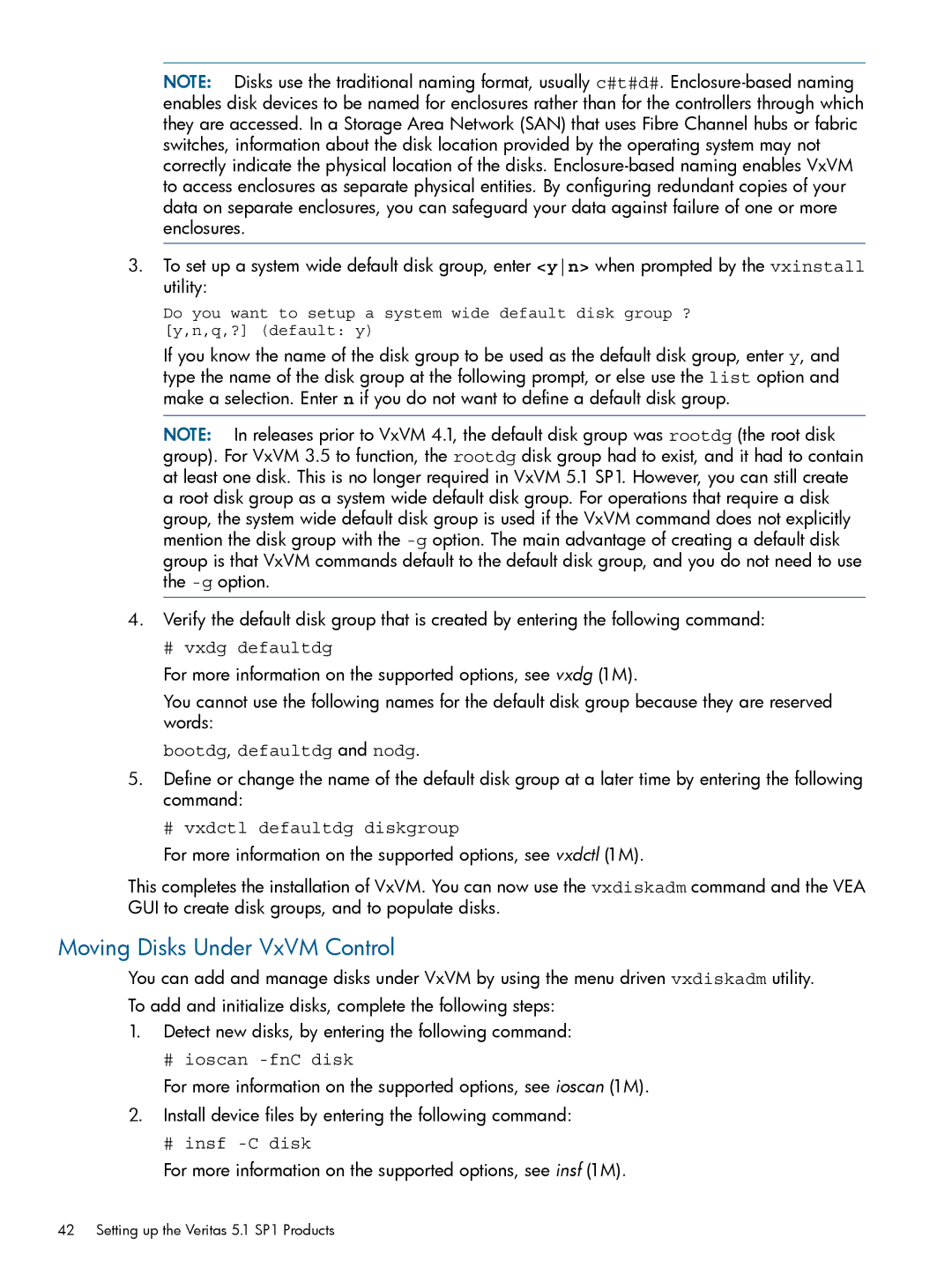
NOTE: Disks use the traditional naming format, usually c#t#d#.
3.To set up a system wide default disk group, enter <yn> when prompted by the vxinstall utility:
Do you want to setup a system wide default disk group ? [y,n,q,?] (default: y)
If you know the name of the disk group to be used as the default disk group, enter y, and type the name of the disk group at the following prompt, or else use the list option and make a selection. Enter n if you do not want to define a default disk group.
NOTE: In releases prior to VxVM 4.1, the default disk group was rootdg (the root disk group). For VxVM 3.5 to function, the rootdg disk group had to exist, and it had to contain at least one disk. This is no longer required in VxVM 5.1 SP1. However, you can still create a root disk group as a system wide default disk group. For operations that require a disk group, the system wide default disk group is used if the VxVM command does not explicitly mention the disk group with the
4.Verify the default disk group that is created by entering the following command:
# vxdg defaultdg
For more information on the supported options, see vxdg (1M).
You cannot use the following names for the default disk group because they are reserved words:
bootdg, defaultdg and nodg.
5.Define or change the name of the default disk group at a later time by entering the following command:
# vxdctl defaultdg diskgroup
For more information on the supported options, see vxdctl (1M).
This completes the installation of VxVM. You can now use the vxdiskadm command and the VEA GUI to create disk groups, and to populate disks.
Moving Disks Under VxVM Control
You can add and manage disks under VxVM by using the menu driven vxdiskadm utility.
To add and initialize disks, complete the following steps:
1.Detect new disks, by entering the following command:
# ioscan -fnC disk
For more information on the supported options, see ioscan (1M).
2.Install device files by entering the following command:
# insf -C disk
For more information on the supported options, see insf (1M).
42 Setting up the Veritas 5.1 SP1 Products
